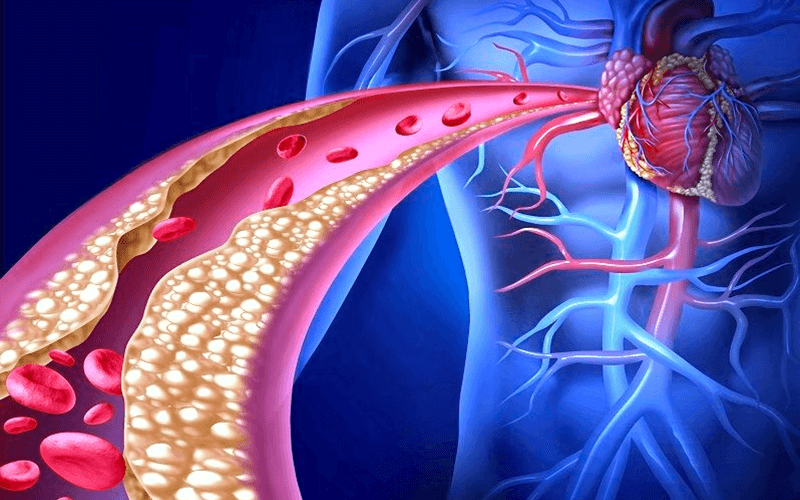What is Hypercholesterolemia?
Hypercholesterolemia refers to the condition characterized by elevated levels of cholesterol in the bloodstream. Cholesterol is a waxy substance that plays a critical role in the body’s overall functioning, contributing to the formation of cell membranes, certain hormones, and vitamin D. However, when cholesterol levels become excessive, particularly low-density lipoprotein (LDL) cholesterol, it poses significant risks to cardiovascular health.
Understanding hypercholesterolemia is essential, as it is often asymptomatic, meaning individuals may not be aware they have elevated cholesterol levels until serious health issues arise. The medical community distinguishes between different types of cholesterol: LDL cholesterol, which is often referred to as “bad” cholesterol, tends to accumulate in the arteries, leading to atherosclerosis. Conversely, high-density lipoprotein (HDL) cholesterol is considered “good” cholesterol, as it helps transport cholesterol away from the arteries and back to the liver for processing. Total cholesterol encompasses both LDL and HDL levels, providing a complete picture of an individual’s cholesterol status.
The condition classified as hypercholesterolemia can be diagnosed through blood tests that measure lipid profiles. Typically, a total cholesterol level above 240 mg/dL is considered high, with optimal LDL levels being under 100 mg/dL and HDL levels ideally above 60 mg/dL. Persistent hypercholesterolemia increases the likelihood of developing cardiovascular diseases such as heart attacks and strokes. Understanding and monitoring cholesterol levels are vital steps in mitigating health risks associated with this condition, emphasizing the importance of regular check-ups and healthy lifestyle choices to manage cholesterol effectively.
Causes and Risk Factors of Hypercholesterolemia
Hypercholesterolemia, characterized by elevated cholesterol levels in the blood, is influenced by a multitude of factors. Understanding these causes and risk factors can empower individuals to take proactive measures towards their health. One of the primary contributors is genetic predisposition, most notably seen in familial hypercholesterolemia (FH). This inherited condition significantly raises cholesterol levels from a young age, leading to an increased risk of cardiovascular diseases. Individuals with a family history of high cholesterol or related heart conditions should be particularly vigilant.
Diet also plays a crucial role in the development of hypercholesterolemia. Consuming a diet high in saturated fats and trans fats can elevate levels of low-density lipoprotein (LDL) cholesterol, often referred to as “bad” cholesterol. Trans fats are commonly found in processed foods, which further complicates dietary habits. Consequently, a well-balanced diet, rich in fruits, vegetables, whole grains, and healthy fats, is essential to maintaining optimal cholesterol levels.
Lifestyle choices are additional factors that can significantly affect cholesterol levels. A sedentary lifestyle, characterized by minimal physical activity, has been linked to higher cholesterol. Regular exercise helps enhance high-density lipoprotein (HDL) cholesterol, known as “good” cholesterol, which aids in clearing LDL cholesterol from the bloodstream. Smoking, on the other hand, not only lowers HDL levels but also damages blood vessels, raising the risk of heart disease.
Furthermore, certain health conditions contribute to hypercholesterolemia. Diabetes can cause an increase in triglycerides, while hypothyroidism may lead to higher LDL levels. Addressing these underlying conditions is crucial for effective management of cholesterol levels. By recognizing the multifactorial nature of hypercholesterolemia, individuals can better understand their own risk factors and take appropriate steps towards improving their cardiovascular health.
Health Implications and Complications Related to Hypercholesterolemia
Hypercholesterolemia, characterized by elevated levels of cholesterol in the bloodstream, poses significant health risks if left unmanaged. One of the primary concerns associated with this condition is its close association with cardiovascular diseases, particularly atherosclerosis. Atherosclerosis occurs when cholesterol accumulates in the arteries, leading to their narrowing and hardening. This can severely restrict blood flow and ultimately culminate in life-threatening conditions such as heart attacks and strokes. According to the American Heart Association, approximately 697,000 people die from heart disease each year in the United States, with high cholesterol being a significant contributing factor.
The impact of unmanaged hypercholesterolemia extends beyond cardiovascular health. Elevated cholesterol levels can also lead to pancreatitis, an inflammatory condition of the pancreas that can be acute or chronic. This complication arises when high levels of triglycerides—a type of fat related to cholesterol—predominate in the bloodstream. The connection between lipid abnormalities and pancreatitis underscores the necessity for maintaining balanced cholesterol levels to prevent these severe health outcomes.
In addition to the dire consequences for heart and pancreatic health, studies have revealed that hypercholesterolemia may also contribute to the development of other issues such as metabolic syndrome and type 2 diabetes. The Framingham Heart Study indicated that individuals with high cholesterol levels are more likely to develop insulin resistance, a precursor to diabetes. This interlinking of conditions highlights the importance of early detection and management of hypercholesterolemia.
Given these potential complications, monitoring and addressing cholesterol levels is crucial. Regular health check-ups and screening can aid in identifying hypercholesterolemia even before symptoms arise. Through timely intervention, individuals can greatly reduce their risks associated with the serious health implications of untreated high cholesterol.
Management and Lifestyle Modifications for Hypercholesterolemia
Managing hypercholesterolemia is essential for reducing the risk of cardiovascular diseases and improving overall health. One of the most effective approaches involves making significant lifestyle modifications, particularly in dietary habits. Increasing dietary fiber is a beneficial strategy, as it can help lower cholesterol levels. Foods rich in soluble fiber, such as oats, beans, lentils, fruits, and vegetables, are particularly effective. These foods not only help lower LDL cholesterol, but they also promote overall heart health.
In addition to increasing fiber intake, reducing processed and saturated fats is crucial in the management of hypercholesterolemia. Individuals should limit their consumption of fried foods, high-fat dairy products, and red meats. Instead, opting for healthier fats, such as those found in olive oil, avocados, and nuts, can contribute positively to cholesterol management. Furthermore, incorporating fatty fish rich in omega-3 fatty acids, like salmon and mackerel, supports heart health and can help improve cholesterol profiles.
Regular physical activity plays a pivotal role in managing hypercholesterolemia effectively. Engaging in moderate to vigorous exercises, such as brisk walking, swimming, or cycling, for at least 150 minutes each week, can help raise HDL cholesterol levels—the “good” cholesterol—while reducing LDL cholesterol and triglycerides. Along with physical activity, maintaining a healthy weight is equally important. Even modest weight loss can have a significant impact on lowering cholesterol levels and improving overall health outcomes.
While lifestyle modifications form the cornerstone of hypercholesterolemia management, some individuals may require medication, such as statins, to achieve optimal cholesterol levels. It is essential to consult a healthcare provider to assess cholesterol levels and determine the appropriate treatment plan. Regular health check-ups and cholesterol tracking are vital for monitoring progress and making necessary adjustments to one’s management strategy. By integrating these actionable steps into daily life, individuals can take charge of their health and reduce the risks associated with hypercholesterolemia.


